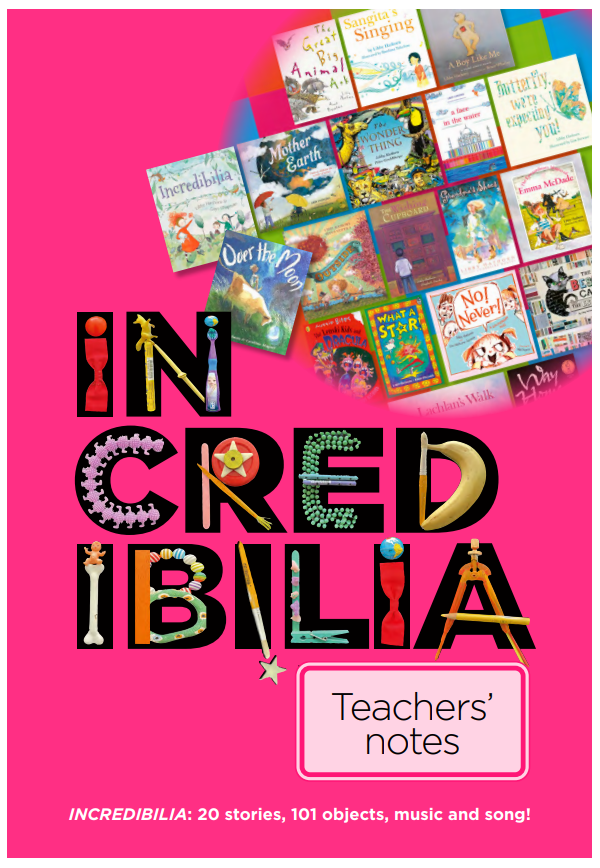Incredibilia: Teachers Notes

BACKGROUND NOTES
Incredibilia is an imaginative childhood journey, discovering some of the innumerable awe-inspiring wonders of our world. It is a joyous compilation of stories by children’s author, Libby Hathorn. Incredibilia has been adapted for the stage by Kim Carpenter with original music by Peter Kennard.
Incredibilia draws on words and images from 20 of Libby Hathorn’s books, ranging from 1980 to 2023. It is recommended, but not essential, that students be exposed to these texts prior to their visit. While some books are out of print, many of Libby’s books will be available through public and school libraries. With the author’s permission, excerpts from texts are included in these notes if particularly relevant.
All school bookings receive a copy of The Best Cat, the Est Cat (2021).
Incredibilia is recommended for ages 5 to 10 years (Years K - 4).
Download the Incredibilia Teachers' Notes (PDF).
NSW CURRICULUM LINKS AND RESOURCES
Incredibilia supports learning and general capabilities across English, Drama and Music.
The following curriculum links and resources are related to the Incredibilia performance:
English
| Stage | Text Requirements | Objectives | Outcomes |
| Early stage 1 | Text types: Picture books, Australian literature. oetry and texts that feature wordplay and figurative language. | Understanding and Responding to Literature | ENE-UARL-01: understands and responds to literature read to them |
| Stage 1 | Text types: Picture books, Australian literature. Poetry and texts that feature wordplay and figurative language | Understanding and Responding to Literature | EN1-UARL-01: understands and responds to literature by creating texts using similar structures, intentional language choices and features appropriate to audience and purpose |
| Stage 2 | Text types: Picture books, Australian Literature; poetry. Texts that include imagery, symbol and connotation | Understanding and Responding to Literature | EN2-UARL-01 identifies and describes how ideas are represented in literature and strategically uses similar representations when creating texts |
Music
| Stage | Content | Objectives | Outcomes |
| Early stage 1 | Instrumental Music | Performing
Listening | MUES1.1 Participates in simple speech, singing, playing and moving activities, demonstrating an awareness of musical concepts. MUES 1.4 Listens to and responds to music. |
| Stage 1 | Instrumental Music | Performing
Listening | MUS1.1 Sings, plays and moves to a range of music, demonstrating an awareness of musical concepts. MUS 1.4 Responds to a range of music, expressing likes and dislikes and the reasons for these choices. |
| Stage 2 | Instrumental Music | Performing Listening | MUS2.1 Sings, plays and moves to a range of music, demonstrating a basic knowledge of musical concepts. MUS2.4 Identifies the use of musical concepts and musical symbols in a range of repertoire. |
Drama
| Stage | Content | Objectives | Outcomes |
| Early stage 1 | Drama Forms: Storytelling | Making Appreciating | DRAES1.1 Uses imagination and the elements of drama in imaginative play and dramatic situations. DRAES1.4 Responds to dramatic experiences. |
| Stage 1 | Drama Forms: Storytelling | Making
Appreciating | DRAS1.2 Conveys story, depicts events and expresses feelings by using the elements of drama and the expressive skills of movement and voice. DRAS1.4: Appreciates dramatic work during the making of their own drama and the drama of others. |
| Stage 2 | Drama Forms: Storytelling | Making Appreciating | DRAS2.2 Builds the action of the drama by using the elements of drama, movement and voice skills. DRAS2.4 Responds to, and interprets drama experiences and performances. |
